Shelton Abbey, just outside Arklow in County Wicklow, is not like any other Irish prison.
Run by Governor Conal Healy, the prison is at the forefront of trying to create a more stable, peaceful environment for its inmates – whose crimes range from petty offences to drug trafficking to murder – with a view to creating a better society upon their release and greatly reduce the risk of re-offending.
“There are a lot of guys here who have been, for whatever reason, sent to prison. You have to divorce yourself from what they did to where we are, to what we’re trying to do. We’re trying to send them back out better, and as well prepared (for the outside world) as possible.” – Conal Healy
I visited Shelton Abbey recently and was immediately struck by how, for want of a better term, un-Shawshank the whole place was.
For someone whose greatest offence was the accidental lifting of a Chomp bar from the local shop as a pre-teen (don’t tell my mam), I was daunted by the prospect of mixing with inmates who had spent time in some of the country’s toughest detention centres.
Less Alcatraz, more Ballykissangel
Instead, when you drive up to Shelton you’re struck by the fact that there’s no barbed wire, there are no massive fences, no metal detectors. Immediately in front of the main building are several picnic tables, for prisoners to spend time with visitors, and the institution – which even houses a working farm, tended by the inmates – is surrounded by rolling fields, the town of Arklow off in the distance.
Less Alcatraz, more Ballykissangel from an aesthetic point of view, so how come nobody just flees?
“Our absconding rate has gone down into single figures,” Healy explains.
“They’re not running, because if they do they’re running back to where they came from.

Prison governer Conal Healy
“So if you came from another closed facility and you had two years left, and you were here for one or two months, and if it meant that in three months you could have moved on from here, if you run and you get caught you’re going back to that other prison and you’ll do that extra eight months, ten months.
“So I ask them to stop and think, ‘wherever you are, take a breath and think about what you’re giving up.'”
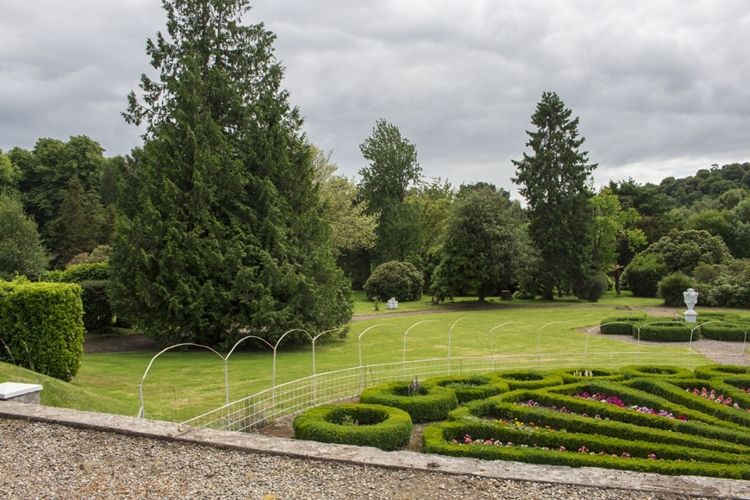
The grounds at Shelton Abbey
Shelton currently houses 115 prisoners, many of whom have spent time in other prisons around Ireland.
“In terms of mix, you’re talking about guys from the age of 19 to their late 60s,” Healy reveals.
“You’re going from life sentence prisoners down to guys who have committed slightly more trivial crimes. It’s a cross between guys who are spending their first time in prison, to guys who have been in prison a number of times.”
What offences would they have committed?
“A total, broad spectrum. A high percentage are probably drugs-related, from trafficking to users who may have committed robberies and other crimes, and then you have those who are in for more serious crimes like murder.
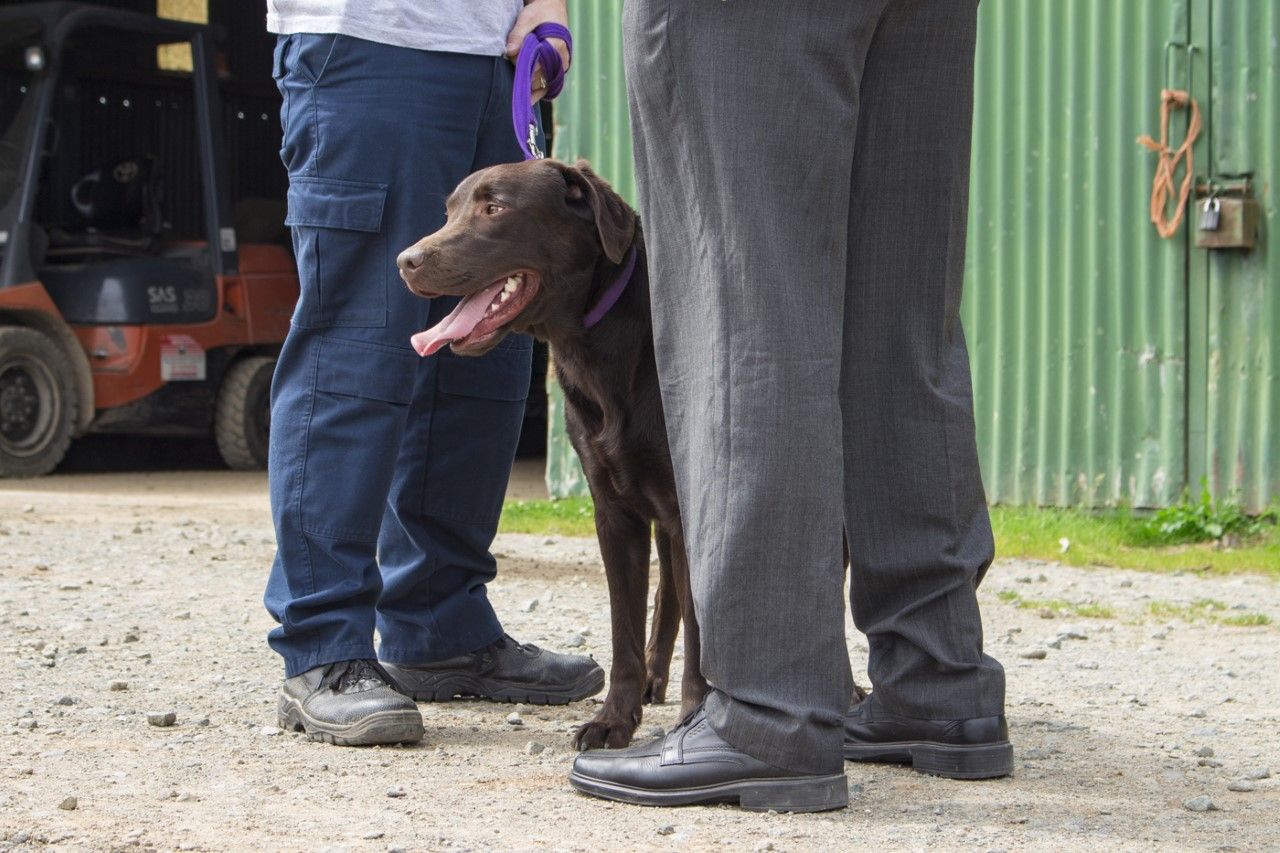
“The interesting thing from a research point of view is that you have guys who are coming through that door as first offenders, and guys who may have offended repeatedly due to social and family problems.
“Then you have guys who are coming who have committed crimes that could have been down to mental health issues, could have been a scream for help, and hopefully this research will help us develop how to deal with that.”
Psychological research
The research that Healy is speaking about is being spearheaded by Dr. John Synnott from Dublin.
Synnott is an Investigative Psychologist from the University of Huddersfield, working with Dr. Maria Ioannou and a research team to mine data and information that will prove invaluable to informing policy around the treatment of prisoners in Ireland.
He believes that the innovative steps being taken in Shelton Abbey will have huge knock-on effects for the broader prison system.
“One thing that we know from all the research, both nationally and internationally, is that prison, across the board, doesn’t work in regards to effective punishment or rehabilitation,” says Synnott.
“This is evidenced in the reoffending rates that are consistently reported within the research literature. If you go to prison once then you are likely to go back there again.
“How do we stop this? You need innovative approaches and you need to develop evidence-based research to inform practice.
“It’s a more relaxed atmosphere here (at Shelton Abbey) than what you will find in other facilities where it’s very lock-and-key, which is a necessity.
“Here, these guys are empowered to contribute to the upkeep and the well-being of where they live and you can see it all around you with the activity that’s going on. All of this is offender-driven, all the contributions come from the inmates and those opportunities aren’t available in other institutions, obviously for a variety of reasons, security being paramount.
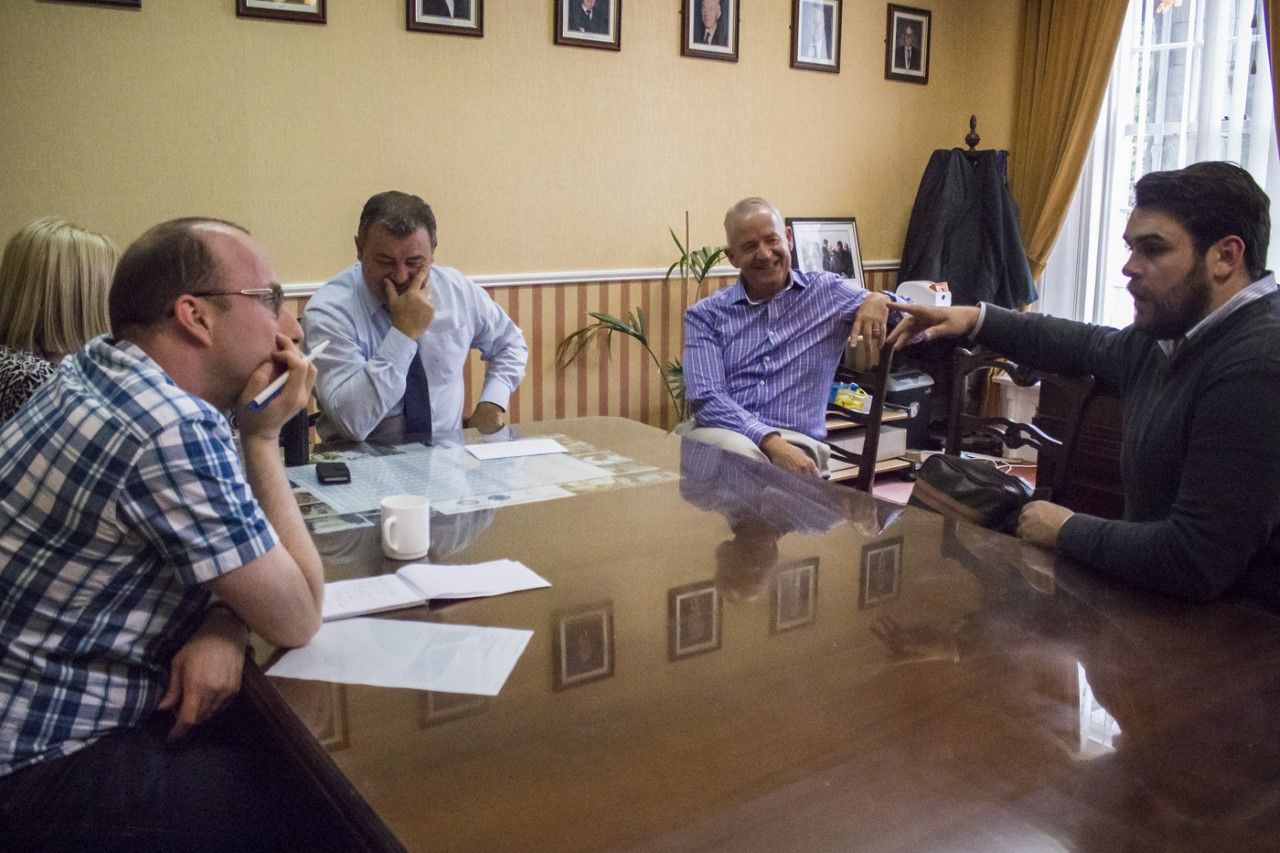
Dr. John Synnott (far right) explains his research
“Something like this takes a lot of time to get to this stage, but you can see there’s a lot of merit in it. It should be showcased.”
Inmates are expected to work hard, and that hard work can be seen in the lush gardens that surround the prison’s buildings. The prisoners work on a daily basis to maintain the grounds of Shelton Abbey.
Buddy Dogs Programme
A number of prisoners are also taking part in the Buddy Dogs Programme.
This is a training programme set up by Dogs for the Disabled; inmates are trained in dog obedience as well as dog-handling, care and grooming. The prisoners then teach the dogs basic training (e.g. sit down, stand, recall) as well as more advanced training (e.g. park, touch, and location training such as ‘go to mat’ and ‘stay’).
Once the dogs are fully trained, they are then placed with individuals with different disabilities.
As well as its obvious benefits for the community and for the people who so badly need the dogs, the programme has grown in importance within Shelton Abbey since it was established in 2012.
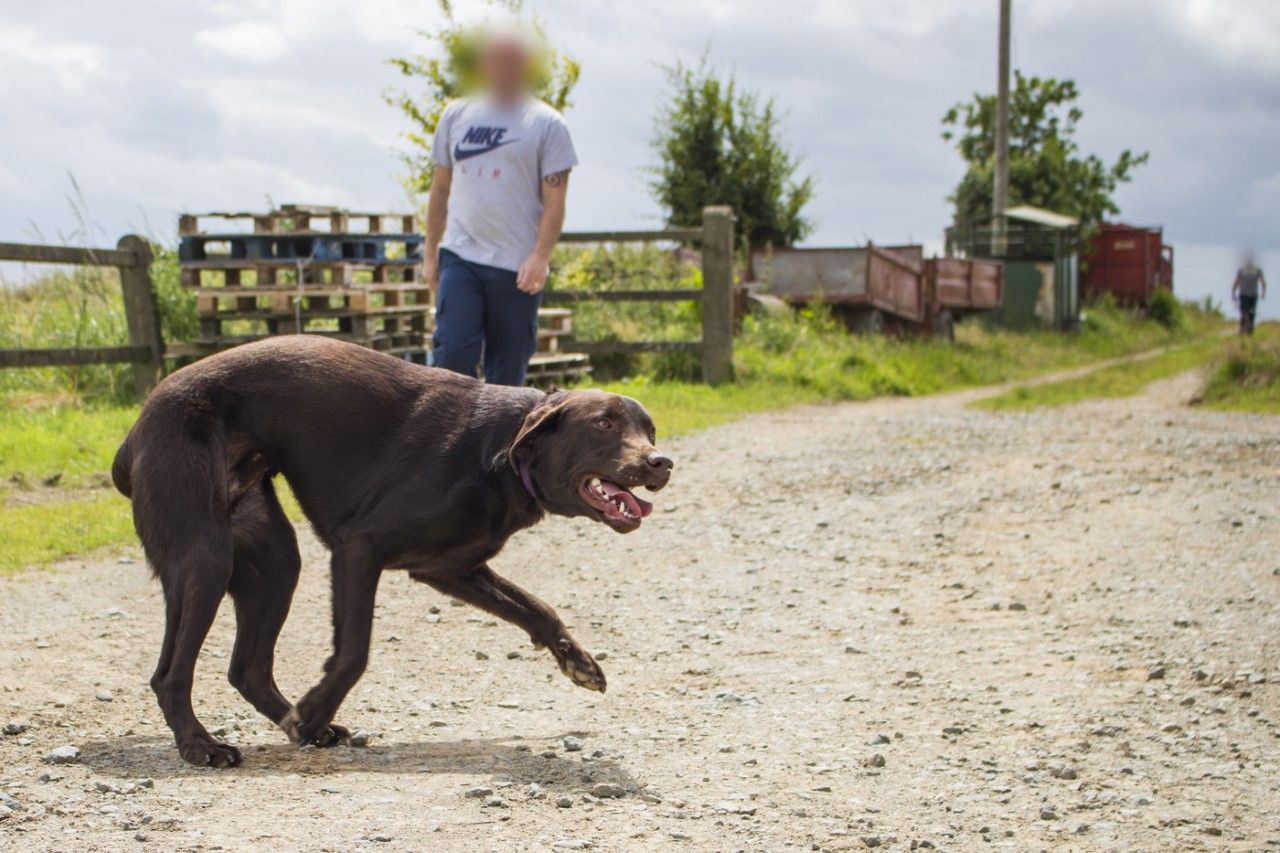
“The dogs come in and there’s an empathy,” says the prison’s governor.
“For eight months you’ve a dog living with you, you’re feeding it, you’re looking after it. It’s going to a child with special needs. The kids are coming in to play with the dog, you build up a big bond. It’s good.”
“We did a study on the impact of this, to see if it was working,” adds Synnott.
“It was clear that this was something that was having an impact on offender well-being within the prison system. Also the knock-on benefits, not just for those with the dogs, but the guys who are mates with those who have the dogs, etc.
“We were able to use the research to feed back to Conal about where some of the small problems may arise, and this is how you may be able to look at dealing with it.”
Healy tells the story of one young girl with learning difficulties who had been given a dog who had been through the Shelton programme. When the girl, through no fault of her own, frightened the dog after an outburst, it was decided to bring them both to Shelton Abbey on a regular basis.
“What happens now is that the dog comes back, with the girl, and we train them together in our environment. That girl and that dog come back every week and they work with the prisoners. That’s brilliant, it’s so normal, and she’s so grateful. It also works for us because the prisoner standing there with the dog can now see the girl that the dog goes on to help.”
The prisoner’s point of view
I got to speak to Charlie (not his real name), one of the prisoners who is looking after a dog before it goes on to help a disabled person.
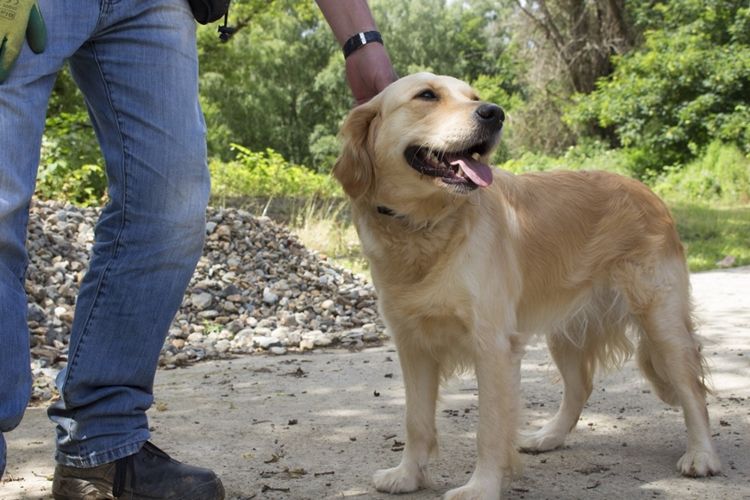
“She’s a good companion,” he says. “She gets me up and out, I’ve to bring her for walks. I had a habit of staying back a lot, when I was in the other jail, but down here is different.
“I get up around 7, I bring her out around 8 or 8.30, throw the ball around. She’ll chase it back and forwards.”
Peace of mind
We asked Charlie how Shelton compares to other institutions he’d been in?
“I was in a number of other prisons before. This is way better,” he said.
“When I was in the main jail you’d be confined, like. One place I was in before is nothing but bars every few feet. You’re locked down, whereas here you can wander around. (Points to his work on the grounds of the prison) Look at my job, that’s just great you know. This gives you peace of mind before getting released, it gives you time to think on things.”
There is a lot of positive activity going on and prisoners given freedoms that they wouldn’t have access to elsewhere. For instance, Healy allows the use of mobile phones, as the former payphone system was causing difficulties among the inmates.
Sanctions
However, the authorities are quick to point out that prisoners who step out of line will be sanctioned.
“We are a prison,” insists Healy.
“These guys all came from secure institutions. On a Friday they’re behind a screen on a visit and then suddenly they’re in Shelton. It’s psychological, I think, the onus of trust is back with these guys. It’s about trust and respect, and that’s across from staff to family to visitors to everybody.”
I ask if there is ever a point where it breaks down?
“You have your rules and regulations. We must adhere to the rules and regulations, but what you try to do is to be very, very fair. In an open centre, I deal with the disciplinary reports. If there’s a charge made I want to be totally, totally satisfied that there is a case to answer, and then I will act accordingly.
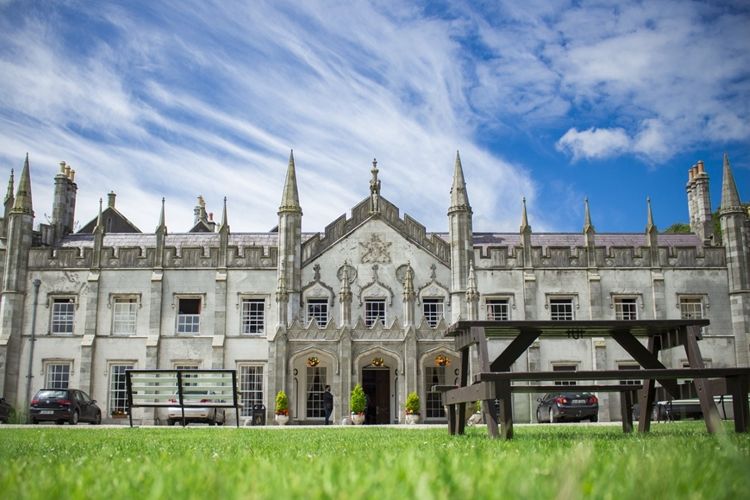
The entrance to Shelton Abbey
“It does happen, there are people here who would take substances, illegal substances, or they would try to abscond and we act on it.”
I’m curious to know if solitary confinement is used to deter prisoners from stepping out of bounds, literally or metaphorically.
“There are no locked doors, no. There are communal rooms and single rooms. You’ll see guys walking around. They have the freedom to go outside during daylight hours but we do have number checks. They do have to be in certain places at certain times.
“There’s work, farm work, and school to be done. If someone has an appointment and someone doesn’t turn up we want to know why? What’s the problem? So on and so forth.”
The future of the Irish prison system
Healy’s intention is clear, he’s planning for the future of both the Irish prison system and the people within it.
“There are a lot of guys here who have been, for whatever reason, sent to prison. You have to divorce yourself from what they did to where we are, to what we’re trying to do. We’re trying to send them back out better, and as well prepared (for the outside world) as possible.
“I think we can add more to the mix to help them to do that, we can do better than we’re doing at the minute.”
LISTEN: You Must Be Jokin’ with Aideen McQueen – Faith healers, Coolock craic and Gigging as Gaeilge


















































